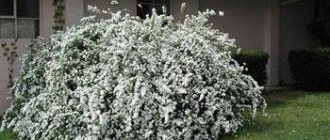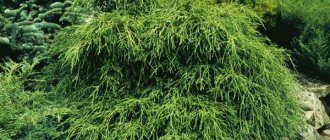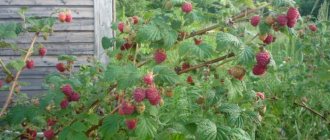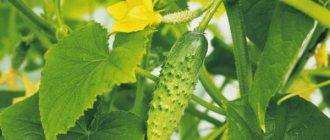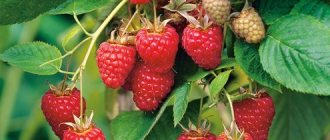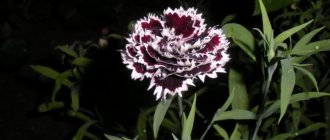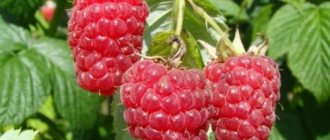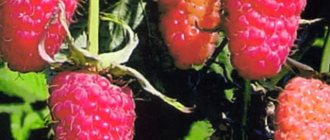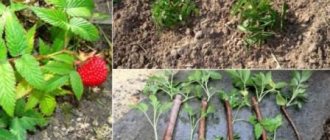An amazing, unusual plant that is still very rarely seen anywhere in our country. Decorative raspberry is 1.5-2 m tall, a luxurious bush with an abundance of large flowers and a delightful aroma. It blooms almost from spring to winter, adding its large crimson fruits to the flowers in the fall.
AGRO PREMIUM is an innovative, environmentally friendly plant activator, without chemicals, that protects berries, fruits and vegetables from pests and diseases, increases seed germination, stimulates root formation and plant growth, and significantly increases productivity.
Due to the similarity of the shape of the leaves to the Canadian maple, this raspberry received the name raspberry maple. Unpretentious, winter-hardy, disease-resistant, in nature it grows among forests, on rocky slopes, in inconvenient places.
Scientists call it fragrant or fragrant raspberry. People call it Siberian raspberry.
Raspberry: biological certificate
This is still a rare species for our gardens, which is difficult to find even in reputable nurseries. Amateur gardeners often call this exotic crop “raspberry-maple”, because its leaves are shaped like maple leaves.
FAMILY
EVERYTHING YOU NEED FOR THIS ARTICLE IS HERE >>>
Rosaceae.
APPEARANCE
A deciduous shrub with shiny brown shoots and peeling bark.
LEAVES
Bright green, shaped like maple trees, on a long petiole, turning yellow in autumn.
FLOWERS
Large, crimson or pinkish-red, solitary or collected in short paniculate inflorescences.
FRUIT
Collected drupes up to 1-1.5 cm, raspberry-red, pleasant sweet and sour taste.
I first saw fragrant raspberries in a neighboring area. The bush with berries looked very impressive, and new flowers on the plant bloomed until mid-autumn. I asked to share - and I got a slender shoot with an excellent root system. This is how I began to grow one of the most decorative types of raspberries.
Related link: Autumn raspberries “Rushbushberry” - cultivation and care
Let's take a closer look at this exotica
Despite the fact that many recognized this ornamental raspberry as a “Siberian”, in fairness it must be said that it comes from North America (Oregon). Its character is “Nordic”, since it grows on mountain slopes overgrown with forest, and nothing is done to it. The height of the bush in the wild is more than 2 meters, and in captivity it is about 1.5 meters (sometimes, however, there are overgrowths). The cultivation of fragrant raspberries began at the end of the 18th century (as scientists say), but it was brought to Russia at the beginning of the 20th century. It turned out that the plant is so unpretentious that it can grow everywhere.
Today, raspberry is a rare guest in garden plots; more often this ornamental plant can be seen in public gardens, parks or private gardens. The simple fact is that when hearing the word “raspberry”, few people think about the possibility of using it to decorate the site. But raspberry is exactly the case when stereotypes are broken.
Choosing a site for planting raspberries
Fragrant raspberries grow best in a sunny place, although they can withstand slight shading. It can be planted even in the forest zone of the garden, but the yield of berries there will be lower. The unpretentious shrub prefers cultivated areas, although it also adapts to less fertile soils.
In the wild, fragrant raspberries reach a height of 3 m, but in cultivated form the bush does not exceed 1.5 m
It is better to plant fragrant raspberries in the fall (before mid-October),
but spring planting (April) is also acceptable. In the prepared soil, I dig holes measuring 20x20 cm and add humus. After planting, I water the seedlings abundantly and hill them up.
FACT: Fragrant raspberries are practically not affected by pests and do not suffer from fungal diseases.
Agricultural technology
Landing
There are no special features in planting this raspberry; it is no different from planting ordinary varieties. Pits 40x40x40 are prepared in advance, a little homemade organic matter and 1 tsp are poured. mineral fertilizer, add ash only in acidic soil. Everything is good to shed.
Dig the young plant to a depth of 20-25 cm, immediately spud it up, compact the soil around it and water it. Cover the top with mulch in the form of humus or peat, with a layer of 5 cm.
The fragrant raspberry grows very strongly, preventing weeds and everything that grows nearby from growing. Bushes, if there are several of them, are planted at a distance of 60 cm.
Both spring and autumn are suitable for planting.
Care
This unpretentious beauty loves loose, non-acidic, fertile soil, but can grow anywhere, prefers full sun and also grows in partial shade.
It does not tolerate excess moisture, so you can water it once every 7 days, but it’s good.
More on the topic: Variety of large-fruited raspberries Valdai
During the season you need to feed three times:
- before the leaves bloom - 0.5 buckets of rotted horse manure mixed with soil and fertilizer with nitrogen;
- when the plant blooms, a complex of minerals;
- before winter, organic again.
It is useful to water once every 3-4 weeks using an infusion of stinging nettle.
Such raspberries do not need to be protected from the cold, except for very severe frosts and insufficient snow. Just in case, in the fall you can bend the bush to the ground and secure it.
Trimming
In spring: cut out weakened thin branches and dried out ones from last year.
Since the end of summer. When fruiting has finished, the upper part that is thinner than 5 mm is cut off. Old and newly grown stems are cut out at the root. It is enough to leave no more than 7 shoots, otherwise the plant will fill the entire space.
Reproduction
There are several ways to propagate fragrant raspberries:
using seeds is the most difficult and time-consuming option;
cuttings - in summer the tops are cut and, using a growth stimulator, they produce roots;
dividing the root with young shoots is the simplest method, producing strong and healthy offspring that bloom in the 1st or 2nd year.
Watering and fertilizing raspberry trees
I water fragrant raspberries regularly (but do not allow them to become over-watered!). At the beginning of the season, I use organic matter for feeding (well-decomposed horse manure - half a bucket for a bush, mixed with soil).
From the second half of summer I add ash (2 tbsp under the bush). The following scheme is suitable for mineral fertilizing: in early spring I add azofoska (1 tbsp per 10 liters of water); during flowering - double superphosphate (a matchbox in a bucket of fertile garden soil, mix and add this dose to 3 raspberry bushes) and potassium sulfate (a matchbox in a bucket of water for watering 4-5 bushes); after fruiting - potassium sulfate (1 tbsp per 10 liters of water).
Plant flowers: what are they?
If ordinary garden raspberries have rather inconspicuous flowers, then fragrant raspberries are a completely different matter. Its main advantage is its very large inflorescences (up to 5-6 cm in diameter), white or light pink, with a delightful aroma. You can see them already in early summer on the shoots of the second year. On the shoots of the current year (after pruning the branches of last year in early spring), flowers appear later (in July), but they are larger and brighter. Abundant flowering lasts all summer, until autumn frosts.
Fragrant raspberries - benefits
Like the fruits of ordinary raspberries, raspberry-maple berries have a diaphoretic effect and are useful for colds.
The leaves and shoots of fragrant raspberry, due to the essential oils they contain, have a strong antiseptic, soothing and anti-inflammatory effect.
The high content of iron, potassium and magnesium in fruits helps reduce various types of heart diseases.
For a cold
Fill a liter jar with fresh leaves 5 cm below the container's shoulders. Pour vodka (cover the raw materials by 3 cm from above). Cover with a plastic lid and leave in a dark place for a month. You don't have to strain it. At the first sign of a cold, drink 50-100 ml of tincture, immediately go to bed and wrap yourself up.
For bronchitis
For cold coughs and bronchitis, a decoction of raspberry leaves and stems is useful: 1 tbsp. dry crushed raw materials pour 2 tbsp. boiling water, keep on low heat for 20 minutes, strain. Drink 1/3 tbsp. 4 times a day.
EXPERT'S COMMENT
The decorative qualities of fragrant raspberries, especially the large pink-red flowers, are undoubtedly capable of attracting the attention of gardeners. However, the yield and taste of the fruits of this species are inferior to traditional raspberry varieties. In scientific institutions, raspberry is used in the selection of remontant varieties as a source of disease resistance and early ripening of the crop. In the selection of summer raspberry varieties, this species is a donor of winter hardiness.
Valery MATVEEV, Doctor of Agricultural Sciences
Diseases and pests
| Gray rot Ways to fight:
| |
| Blackening of shoots Ways to fight:
| |
| Raspberry stem gall midge Ways to fight:
|
Raspberry maple: planting and care - summer residents share their growing experience
RASPBERRY OR MAPLE
I remember how a certain very old dona (or lady) from a village near Moscow came to visit one gentleman “at Dacha”, that is, the owner, latifundist and practically a slave on his plantation. In the process of inspecting land holdings, she invariably asked the same question: “What is this?”
And having received an answer, she invariably asked: “Do they eat this?” and also invariably received the answer: “NO.” What caused bewilderment: “Why is it growing here (and there, and everywhere on the site...)?!” “But because it’s beautiful!” – the gentleman answered desperately. And he was not understood. The heroine of our article has very small and inedible fruits, but the foliage and flowers are wonderful!
So, it was called raspberry... decorative raspberry, fragrant raspberry, and also raspberry (Rubacer) - also known as fragrant raspberry . According to the botanical passport - Rubus odoratus . And she came to our gardens from North America.
And apparently, because there is no need to protect our inedible fruits from those hungry for something tasty, our raspberries have lost their thick and sharp needles on the stems. But it is all covered with small hairs.
So to speak, green and fluffy. Associations with maple are caused by the amazing similarity in leaf shape.
Moreover, the leaf size varies from 9 cm to as much as 30 cm in diameter. And yet the most important thing is the flowers. Their diameter can reach 5 cm, to this add the rich purple, pink and white (of the variety) tone of the petals and the pleasant smell, which gave part of the name to the plant. To be fair, I did not have a chance to smell the fragrance of the flowers of the heroine of our story. Flowers are most often collected in racemes or located in the axils of the leaves and at the ends of the shoots. The bush usually reaches 1.5-2 m.
Like many North Americans and generally unpretentious plants, ornamental raspberries are often an aggressor. Its dense active root shoots can fill the entire nearby space. Based on this, it is logical to include “sanctions” (or “counter-sanctions”) in the form of a fairly deep fence in the ground (up to 40 cm) in the form of plastic or other tape.
But propagation of our raspberries is not burdensome.
Dividing a clump can provide a lot of planting material, which then does not get sick, is not capricious and develops beautifully, blooming in the second or even the first year after planting. Since in her homeland our heroine lives in the undergrowth and is able to climb rocky, dry slopes up to a height of 1500 m, we can conclude that she is extremely unpretentious and winter-hardy, including enviable shade tolerance. And it is practically not damaged by pests.
Now let’s look at the question: if they don’t eat it, then why is it needed at all?
A compact bush (with limited root shoots) up to 2 m in height with textured foliage that is not exposed to the ground, and bright flowers, and is also quite unpretentious - what is not the dream of a summer resident and landscape designer? He doesn’t care about the sunny side, or partial shade, or difficult soils. Thus, our decorative raspberries can either act as a tapeworm, that is, a separately growing accent in the garden, or participate in the formation of a fast-growing hedge, even down to problem areas of the garden - in partial shade, on slopes. An ornamental shrub capable of securing slopes and ravine walls is worth a lot!
Decorative raspberries bloom in the middle zone from July to September. Quite a long time, compared to other flowering shrubs. There are two varieties of decorative raspberries: the white-flowered Albus and the pale pink-flowered Tridel.
A little about caring for our heroine. But it is practically not required. Unless (with the likelihood of another Chelyabinsk meteorite falling) the leaves suddenly become pale green with brightly visible veins (which means a lack of nitrogen or iron and magnesium), a little nitrogen fertilizer should be added and foliar fertilizing should be done with the appropriate components.
A little about pruning. And this procedure in this case does not present any problems - in the spring, cut out old and dry shoots, as close to the soil level as possible. But the tops should be saved for richer flowering. Although when forming a hedge, flowering can be partially sacrificed for the sake of density and texture...
Reproduction, as already mentioned, is quite simple - by dividing the bush (all summer) or by layering planted in the spring.
And fragrant raspberries have excellent phytoncidal properties, that is, they are capable of healing the surrounding space. Working with this plant - pruning, cleaning old branches and yellowed leaves - is accompanied by the release of beneficial essential oils. And she is also a wonderful honey plant! And its more than modest fruits, together with dried leaves, can be used to make medicinal tea for colds. Both beauty and benefit...
© Author: A. SEDOV
© Author: Marina ANASHINA, Moscow region. Photo by the author
ORDER QUALITY AND CHEAP SEEDS AND OTHER GOODS FOR YOUR HOME AND GARDEN. PRICES ARE PRICEY. CHECKED! JUST LOOK FOR YOURSELF AND BE SURPRISED. THERE ARE REVIEWS. GO>>>
Below are other entries on the topic “Do-it-yourself cottage and garden”
- What raspberries DO NOT like...: CARING FOR RASPBERIES IS NOT DIFFICULT,...
- Remontant raspberries in Siberia - the secret of growing: Growing remontant raspberries in Siberia Remontant...
- Growing raspberries using the “long shoot” technology: Raspberry harvest in May or…
- Tibetan raspberry, raspberry tree and yoshta - agronomist reviews: TIBETAN RASPBERRY, RASPBERRY TREE AND...
- Caring for ordinary summer non-repairing raspberries at the beginning of summer: SUMMER RASPBERRY - CARE IN...
- Variety of remontant raspberries Veronica: Growing remontant raspberries - variety...
- Standard raspberry (raspberry tree) expert reviews: RASPBERRY TREE - IS THERE...
Subscribe to updates in our groups and share.
When is the best time to plant
Raspberry flowers have a light aroma.
Photo: opt-1088093.ssl.1c-bitrix-cdn.ru Fragrant raspberries are noticeably different from garden ones . There is very little pulp in the berries. Speaking of taste, it can be called “not for everyone.” At the same time, the berries are famous for their unique taste and smell, characteristic only of this species. The fruits are quite small, the yield is low, but they are quite suitable for food and very useful.
Decorative raspberries. Yes, basically, raspberry bushes perform a decorative function. It can fit perfectly both into the city landscape and into a summer cottage, as shown in the photo above. The shrub grows up to two meters in height. There are no thorns. The main value comes from the leaves (fragrant raspberries have another name - “raspberry maple”. It comes from the shape of the leaves - they resemble maple leaves) - they are large, bright green in color. The branches are spreading and create a fairly large shady area. The flowers are very fragrant and grow abundantly on the bush. They come in pink and white colors.
Raspberry bushes have extremely high frost resistance. Even in the northern regions they tolerate winter well. They do not require additional insulation. Also resistant to pests and diseases.
Raspberry does not have its own varieties. However, breeders are working to improve it: increasing immunity and better appearance. The culture is not whimsical; planting and care do not require much effort. Tolerates drought and cold well. It can be grown in any conditions and climate.
The author of the video shares his personal experience of growing raspberry trees:
What varieties of raspberries are there?
It's time to talk about what types of raspberries there are. Namely:
- remontant;
- not repairable.
Moreover, they are divided into early, medium and late ripening varieties.
Remontant raspberry
A distinctive feature of remontant raspberries is continuous fruiting throughout the season. When flowering, the bush bears fruit and does not stop there. New fruits and flowers are formed, after which everything is repeated a couple more times. This plant variety allows you to harvest in summer and autumn. Another characteristic feature of remontant raspberries is that fruits can appear on both 1-year-old and 2-year-old shoots. This helps weaken the bush.
To obtain abundant flowering and harvest, it is recommended to cut off last year's raspberry shoots immediately after harvesting the first harvest. If you properly care for these raspberries, you will be able to harvest until November.
Non-remontant raspberries
The most popular variety of berry is the traditional one. It has medium-sized sweet berries; fruiting occurs from late June to early August. These raspberries bear fruit once a year. The yield of this variety is average, but the advantages include good multiple shoots and excellent adaptability to external changes.
Let's try to plant raspberries
To properly plant fragrant raspberry seedlings, we do this:
- dig a hole (40 cm wide, 40 cm long and 35-40 cm deep);
- pour rotted manure, compost (50-100 g) and a teaspoon of any complex fertilizer into it (ash should not be added, since raspberries love slightly acidic and alkaline soils);
- spill water;
- we place the seedling in the hole (we bury it no more than 20 cm);
- dig in with earth and compact the soil;
- pour plenty of water;
- mulch with non-acidic peat or humus (layer 4-5 cm).
On a note! Planting can be done both in spring and autumn. Since raspberry is a light-loving plant, it is better to choose a sunny place for planting. If you are planting several seedlings, then plant them at a distance of 45-55 cm from each other.
Raspberries for garden decoration
All types of ornamental raspberries are considered unpretentious plants and do not take offense at being pruned. With such a wide variety of species, you can always choose what you need. Dense thorny bushes are widely used for hedges and covering unsightly buildings.
Groups of raspberry plantings on the banks of a pond or on the edge of a forest area look picturesque, especially in autumn. Low plants will decorate flower beds and lawns. Among these shrubs there are species that shed their leaves and are always green.
Many representatives are decorated with original thorns, unusual bark or, during flowering, large beautiful flowers with a pleasant smell.
Some stand out with a thick waxy coating that adorns them all the time. The varieties climbing along the supports, strewn with bright berries, look especially beautiful.
Growing
Landing
Stages:
- Like garden raspberries, raspberries should be planted on well-fertilized soil.
- The soil should not be acidic; for this purpose, after planting, you should regularly add ash under the bush
- The place should be sunny, but due to its unpretentiousness, the plant feels great in the shade
- The distance between bushes should be about a meter
- It is worth paying attention to the fact that there should be no other vulnerable plants nearby, since fragrant raspberries grow strongly
Caring for fragrant raspberries
Steps:
- You can install a trellis about two meters high. But this is not necessary - the plant holds its shape well without it
- The main function of the shrub is decorative, but the plant is still fruitful - you should pick the berries regularly
- You should start feeding the bushes with fertilizers (urea and saltpeter) 2-3 years after planting: in spring and autumn
- The plant does not require preparation for winter. It tolerates low temperatures well even without additional insulation.
- Despite the fact that raspberries are unpretentious, you should not neglect watering. Raspberry loves water.
Trimming
Steps:
- It is advisable to prune in early spring and early autumn
- To give the bush an aesthetic appearance, it should be subjected to decorative pruning as the branches grow
- It is necessary to trim off fruit-bearing branches
- Flowers and branches are also regularly pruned in the autumn, in preparation for winter.
Reproduction
Stages:
- The first, and most difficult way, is reproduction in shifts. Since the waiting period for the harvest can last up to several years. But this method is the most affordable in terms of price.
- Second way. Plant a “bouquet” of shoots cut from the mother bush in moist soil. Tie them to the supports. Water generously. When cuttings, use means to stimulate root growth.
- The most appropriate method of propagation would be to plant root sprouts or parts separated from the main bush.
- Self-seeding An interesting method, but the likelihood of effectiveness is not high. The seeds of ripe raspberry berries are scattered on the ground. Then the birds that pecked them “scatter” the seeds processed by the stomach. After such “processing” the germination of seeds increases significantly
Planting pink leaf raspberries
Roseleaf raspberry is not a very demanding plant, but you need to know some care rules.
Pink-leaved raspberries are planted in the fall before frost. When planting in spring, the survival rate is much worse.
The plant prefers open places in the sun and fertile areas. In the first years it requires increased watering until the plant takes root completely.
When planting raspberries, you must remember that they, like all raspberries, quickly reproduce by root shoots. She needs to be given a place where the raspberries will not interfere with other plants or fence off the plantings by digging metal or slate sheets deep into the ground that are impenetrable to roots. In their natural habitats, raspberries are considered a weed due to their rapid growth.
Given the strong thorniness of the bushes, they can be planted along the fence. Dense leafy branches prevent not only people from entering the garden, but also dogs and cats. Can be planted as individual bushes on lawns or in areas where there is no other vegetation.
If you don’t want pink raspberries to take up too much space, they are planted in a barrel or a spacious pot and buried in a permanent place.
The first harvest appears in the third or fourth year after the bushes are planted in the soil.
Before you decide to plant pink leaf raspberries, remember that if they grow, they will be as difficult to grow as blackberries or regular raspberries. Plants regenerate from roots remaining in the soil.
Origin and use
Under this name, seedlings of rose-leaved raspberry or seductive raspberry, which naturally grow in Australia, the countries of East Asia and Africa, are usually sold. On sale, shrubs may be called “Canadian hybrid”, “Rosolin raspberry”, as well as “strawberry”, “strawberry”, “Chinese”, “Miao Miao”, “Himalayan”, “Norwegian” and “ illacebroid."
Photos from sites offering planting material for decorative varieties of “raspberries” under various names
Both plants belong to species related to garden raspberries, but have nothing in common with its cultivated varieties. The difference between them is as follows:
- Roseleaf raspberry (Rubus rosaefolius or Rubus rosifolius) is a shrub with prickly shoots up to 3 m long. The berries are bright red, elongated, round, small (about 15 mm in diameter). Fresh fruits are almost tasteless, but after heat treatment (for example, in jam) they become sweet, sour and aromatic. The plant is heat-loving; in the middle zone it freezes in winter;
- seductive raspberry (Rubus illecebrosus) is a small subshrub up to 60 cm high. The stems are covered with hard thorns, and the leaves are covered with spines along the edges and lower surface. The berries are scarlet in color, round, up to 30 mm in diameter, with a sweetish taste. The smell is weak. The shrub is unpretentious and winter-hardy. It remains decorative until late autumn. In the Baltic countries and Western Europe it is used in landscape design to create hedges.
Pruning and shaping the plant
An important agrotechnical measure for caring for Tarusa raspberries is pruning. This not only allows you to form a beautiful bush, but is also beneficial for the health of the plant. After all, in this way you redistribute nutrients, directing them not to the formation of new stems, but to increasing the number of berries.
Raspberry trees are pruned in the spring. The so-called double pruning method is used.
The first time raspberries are pinched is in May of the year of planting. As soon as the shoots grow to 0.6 m in height, they are cut to 5-10 cm. This way, the growth of side shoots is stimulated.
The next year, after the end of frost, these same side shoots are pruned. You need to trim by 10-15 cm. This way you stimulate fruit formation.
The second option for pruning Tibetan raspberries is pruning in the fall and next spring. In this case, sanitary pruning of frozen and dried stems is carried out in the spring.
Fruiting and productivity
The flowering and fruiting period of Tibetan raspberries is extended over time. On the bush you can simultaneously find buds, flowers, and berries of varying degrees of ripeness. Harvesting the fruit is difficult due to the thorny stems and leaves. The berries themselves are poorly transported and stored.
The plant has low yield. From one bush, with good care, you can collect only 1 kg of fruit. In Russia there is no point in growing it for its berries; it is usually planted to decorate the area.
On a note! In Eastern countries, Tibetan raspberries are grown as a fruit bush for making wine. The fruits and leaves, which have beneficial properties, are used in folk medicine.
